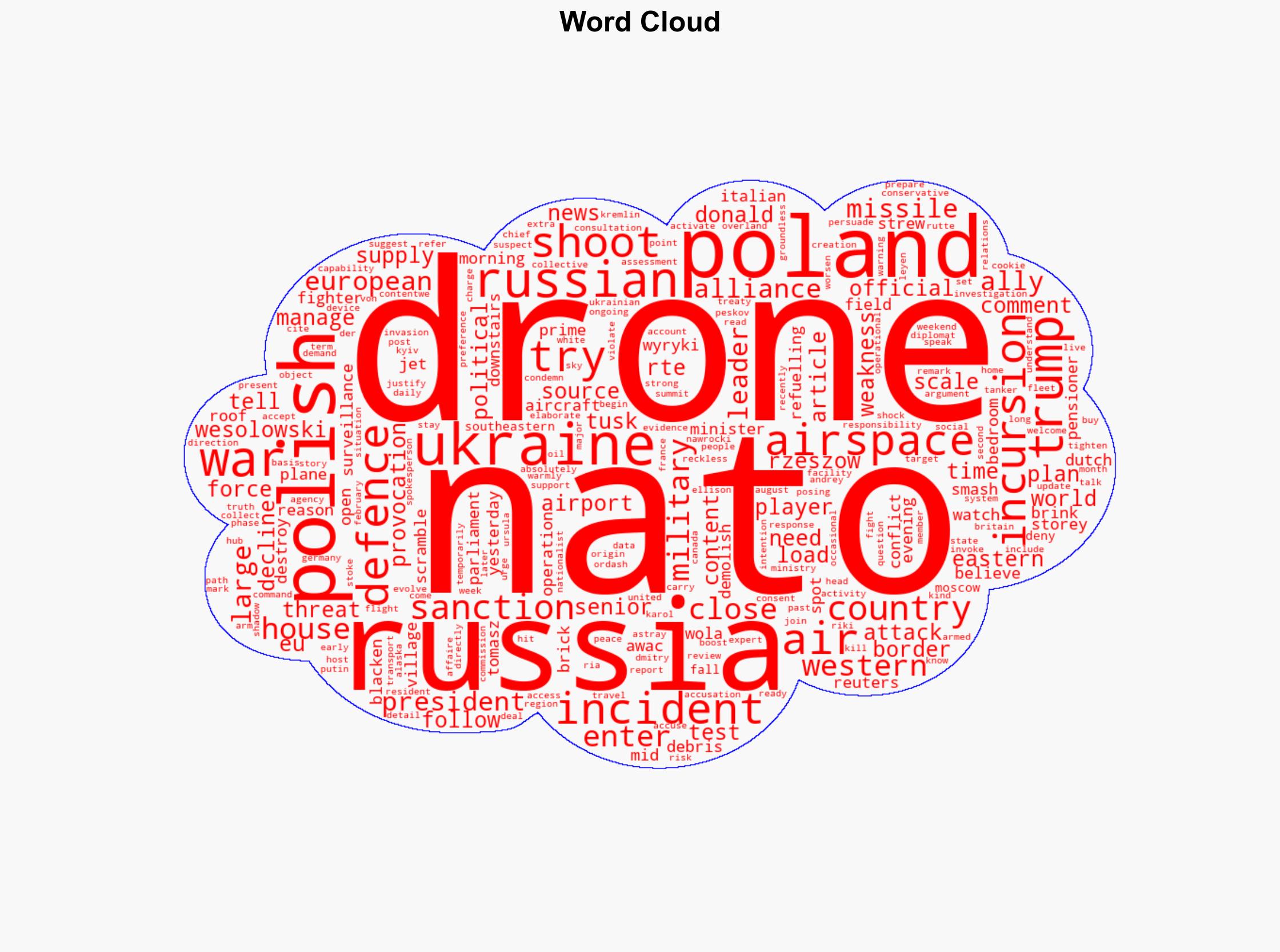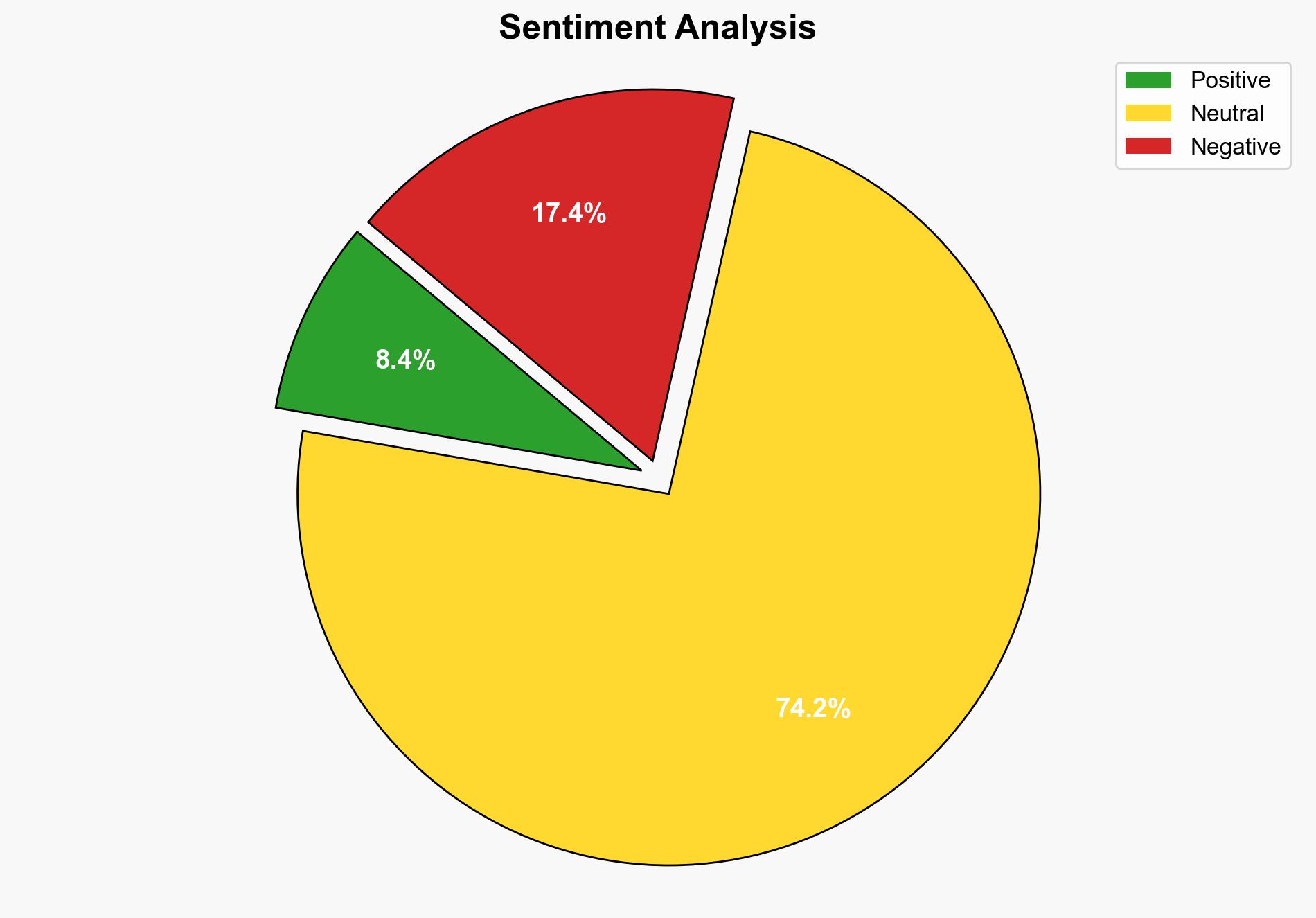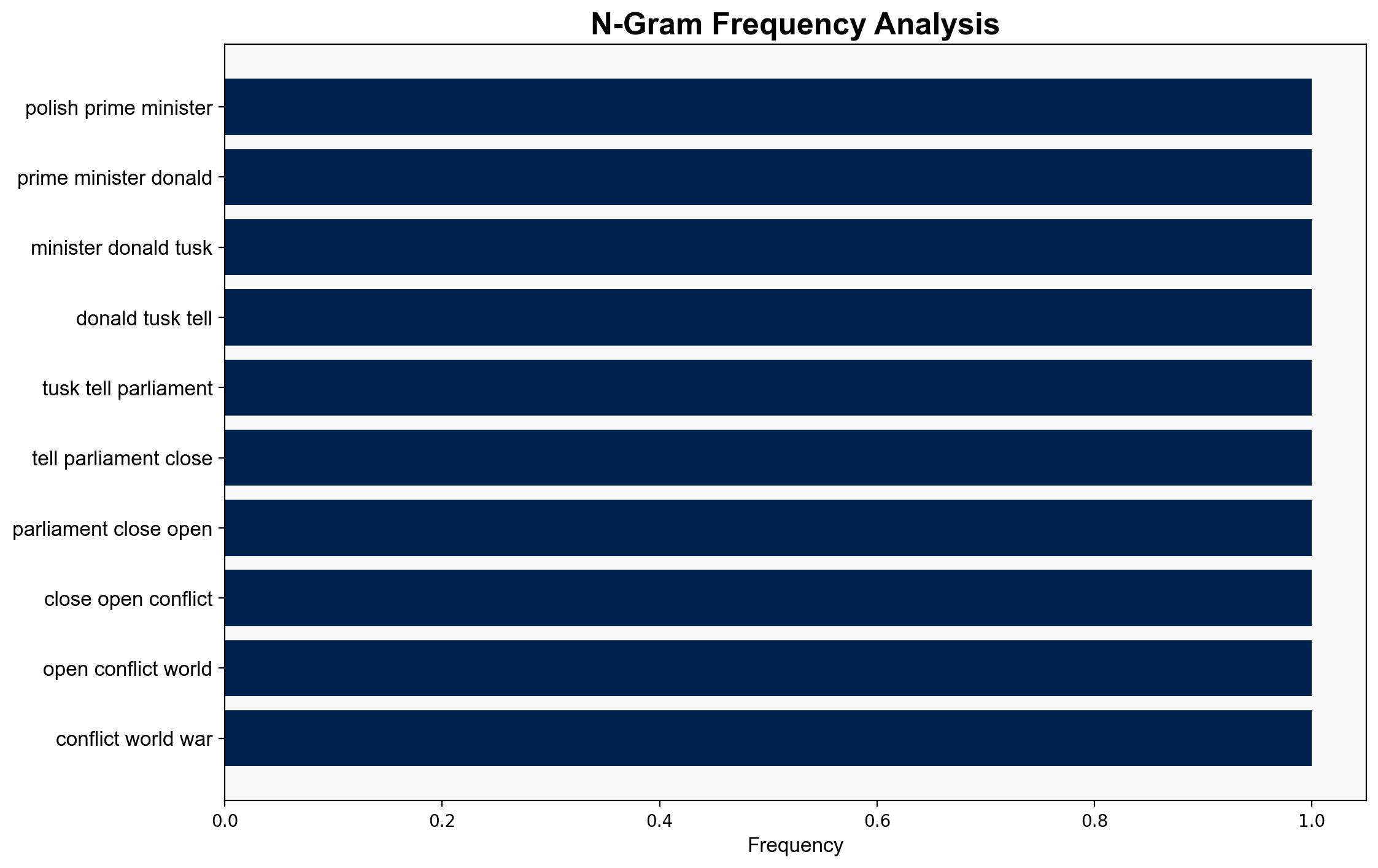Polish military ‘shooting’ Russian drones in its airspace – RTE
Published on: 2025-09-10
Intelligence Report: Polish military ‘shooting’ Russian drones in its airspace – RTE
1. BLUF (Bottom Line Up Front)
The most supported hypothesis is that the drone incident represents a deliberate Russian provocation to test NATO’s response capabilities. Confidence in this assessment is moderate due to the lack of direct evidence linking the drones to Russia. It is recommended that NATO enhances airspace monitoring and diplomatic engagement to prevent escalation.
2. Competing Hypotheses
1. **Deliberate Provocation by Russia**: The drones were intentionally sent by Russia to test NATO’s air defense systems and political resolve. This aligns with historical patterns of Russian behavior aimed at probing NATO’s boundaries and response mechanisms.
2. **Accidental Incursion**: The drones were not intentionally sent by Russia but are a result of miscommunication or malfunction, possibly originating from Ukrainian defense operations or other regional actors.
3. Key Assumptions and Red Flags
– **Assumptions**: The first hypothesis assumes Russia has the intent and capability to conduct such provocations without immediate escalation. The second hypothesis assumes technical errors or miscommunication are plausible given the regional conflict dynamics.
– **Red Flags**: Lack of concrete evidence linking the drones to Russia directly. Moscow’s denial and the absence of detailed forensic analysis of the drones raise questions.
– **Blind Spots**: Potential involvement of non-state actors or rogue elements within Ukraine or Russia is not fully explored.
4. Implications and Strategic Risks
– **Escalation Risk**: If perceived as a deliberate act, this could lead to heightened military readiness and potential conflict escalation between NATO and Russia.
– **Geopolitical Tensions**: Increased strain on NATO-Russia relations, potentially impacting diplomatic negotiations and regional stability.
– **Economic Impact**: Potential disruptions in Eastern Europe, affecting trade and energy supplies.
– **Psychological Impact**: Heightened fear and uncertainty among populations in Eastern Europe, impacting public sentiment and political stability.
5. Recommendations and Outlook
- Enhance NATO’s airspace surveillance and defense capabilities in Eastern Europe.
- Engage in diplomatic dialogue with Russia to clarify intentions and reduce tensions.
- Prepare for potential escalation scenarios, including increased military readiness and strategic communication plans.
- Scenario Projections:
- **Best Case**: Diplomatic resolution with Russia, leading to de-escalation.
- **Worst Case**: Military confrontation between NATO and Russia.
- **Most Likely**: Continued low-level provocations with diplomatic efforts to manage tensions.
6. Key Individuals and Entities
– Donald Tusk
– Tomasz Wesolowski
– Donald Trump
– Karol Nawrocki
– Dmitry Peskov
– Andrey Ordash
7. Thematic Tags
national security threats, regional focus, geopolitical tensions, airspace defense




